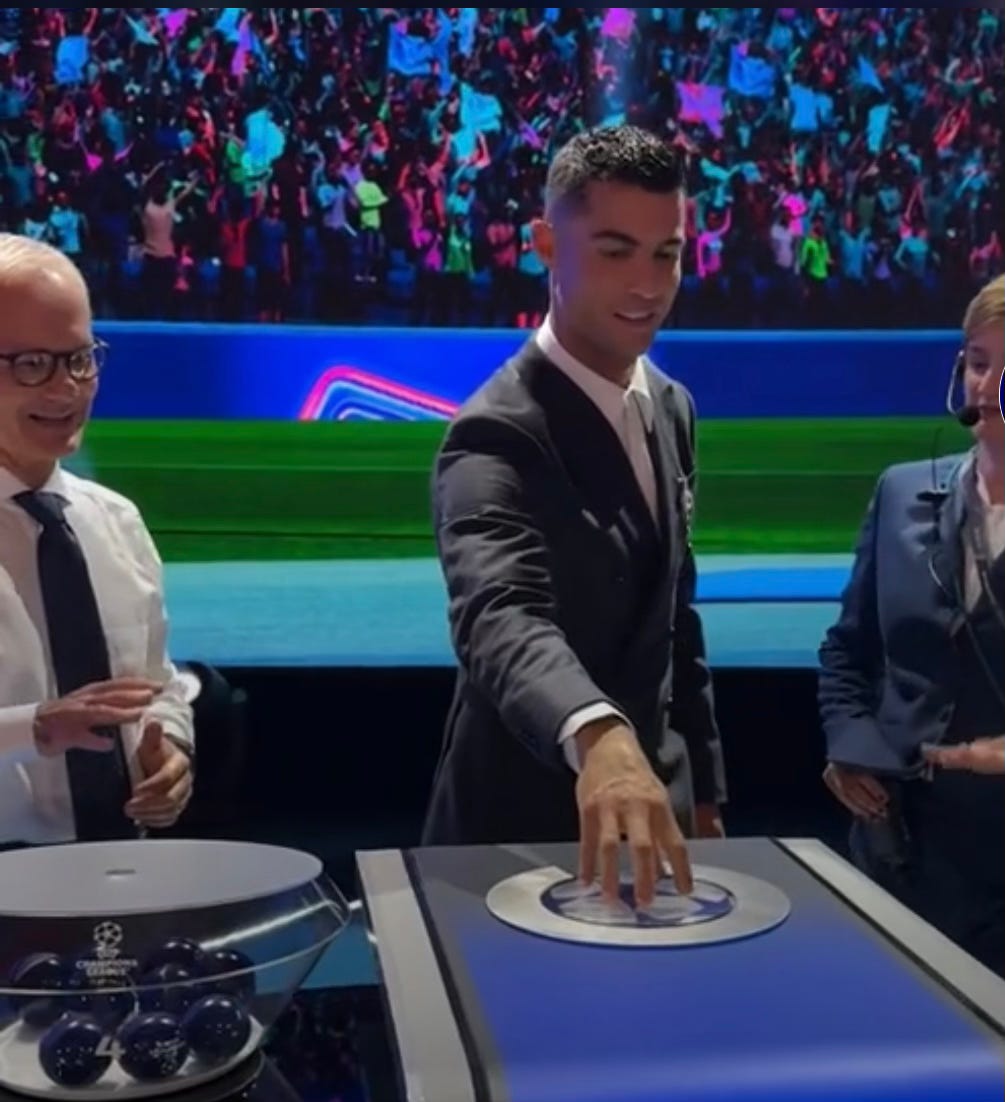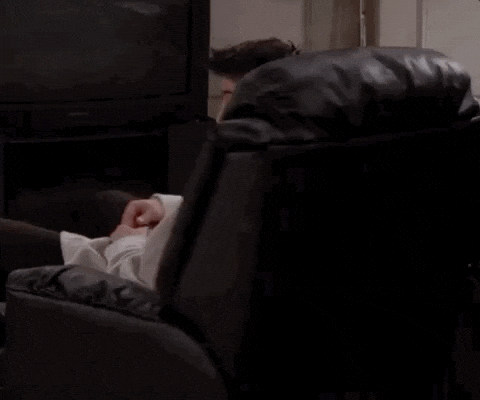Reset
The revamped UEFA Champions League is a prime example of a sports event reshaped to meet fluctuating economic demands. But will it still fulfil its primary function?
There are, to the best of my limited understanding, several reasons why computers crash.
They contract a virus. The memory runs out. A piece of software tries to execute a command that is not permitted by the firmware.
Sometimes, the operating system detects through sanity-checking logic that it has lost its internal self-consistency.
(So says Wikipedia, anyway.)
I was thinking about all of this while trying to follow last week’s draw for the inaugural ‘league phase’ of the Uefa Champions League. Club football’s premier competition returns this month with a brand-new vibe. An elegant, easily divisible 32-team format has been replaced by a 36-team one that, well… it comes with a video explainer.
The draw was reworked, too, in a tacit admission of all the added complexity. Uefa abandoned the traditional manual process, which could have taken 36 glass bowls, a thousand plastic balls, and many centuries’ worth of sanitised banter to complete.
Instead, the whole exercise was digitised and automated using software developed by UK-based company AE Live. In a nod to the changing media appetites of key demographics, Uefa even invited YouTube creator Cristiano Ronaldo along to press ‘enter’.
This is, of course, all the result of a temporary software patch – an update engineered to maintain incrementally higher broadcast revenues and offer some cover from big club breakaways, all while that disconcerting whirring sound persists in the background.
And it’s emblematic of the challenge and compromise haunting elite sport in the 2020s. The economic conditions are precarious: confidence in the media rights market is dwindling; investors must be mollified in an era of expensive capital; there is near-infinite competition for audience time. A decades-old, highly productive commercial settlement is in limbo, and no one is sure about what comes next.
For now, Uefa is happy enough with what it has. The 36-team format recurs in the second and third-tier Europa League and Europa Conference League, which have had simultaneous revamps in the biggest expansion of continental club football in a generation. And the governing body is leaning into the positives while acknowledging the wider befuddlement it has caused.
The official line is that none of the confusion will matter. More teams get to face each other, the best players will all be there, the stakes will rise at the appropriate moment.
That may well prove the right take. Still, a project like this – or the expanded men’s Euro and 48-team Fifa World Cup – is very much an experiment with the quality of fans’ attention.
Football exists in a category of one. Many other sports have felt the cooler air of at-best seasonal indifference – the anguished pause between the affirmation of showpiece events.
Even the biggest heavyweights in entertainment can look at a vacant spreadsheet and wish a little too hard upon a star in a galaxy far, far away. And on the pitch, weary IP is felt in the legs of tired competitors whose availability is about to be disputed as never before.
Through a purely media lens, more matches generate higher volume and greater visibility. But that also leads to weaker context and less week-to-week relevance. The harder it is for fans to follow the full story of a competition, the more acceptable it becomes to tune out some of the beats.
And as each chapter starts to feel less essential, what happens to the rest?
Perhaps change is change, when it comes down to it. Progress and decline can be matters of perspective. There will be thrilling memories made in European football this year, some of which would not previously have been possible. Sport is a contest between good and better, and even the best are not perfect.
There are no perfect options right now, anyway – just a series of fixes and workarounds that keep the whole thing operational.
But think of a blank sheet of paper. That very first line of code.
Take a moment. Where would you start?
A smaller piece, which hopefully fits in some way
Few companies quite encapsulate how media and marketing have changed – particularly around the things people really care about – like Lego.
The Danish toymaker built its success (sorry) on a knack for filing patents but once those protections wavered, it remade its contractual world through play. By surrounding itself with essential licences, it remains central to the lives of countless children – not to mention their parents, grandparents and, often, non-parents.
Those collaborations have taken Lego into the worlds of gaming and (sometimes highly) original entertainment, while retaining that distinctive, resourceful identity. Its forays into sport, however, have been relatively limited.
(I’m still waiting for that London Spirit set, myself.)
That may be about to change, following a new multi-year deal with Nike which promises to ‘celebrate sport and creative play’.
Beginning next year, families around the globe could see a series of co-branded products, content and experiences that combine the imaginative power of LEGO® bricks with Nike's "Just Do It" spirit to invite all kids into play and sport.
This could herald a succession of wry, self-referential, somehow poignant adventures for minifigure Naomi Osakas and Kylian Mbappés. Or it could yield some very expensive and uncomfortable-looking trainers.
Either way, Lego is a fascinating case study in the multiplication of brand value. It encourages boundless invention within a legally defined perimeter. It solicits ideas from an active community but has built its own walled garden.
The example it has set is pretty ingenious, even if not everyone will be able to follow the instructions.
Stray notes…
Some folk are getting a little too into AI, and it’s having predictably (and less predictably) unhealthy effects.
“She’s got a cousin. In fact, she’s got ’bout a dozen.
“She’s got one in the oven, who tried to get them all Oasis tickets last weekend, without having heard about dynamic pricing. But that’s nothing to do with me.”
With Jude Bellingham and some Portuguese fella setting up channels, there’s been renewed speculation about the commercial possibilities of YouTube for globally famous athletes.
But it’s also a platform that rewards ambitious production and niche expertise – both evident in this superb video essay from filmmaker and critic Patrick Willems about the enduringly influential motorsport movie Grand Prix. A lunch hour very well spent, if you’re so inclined.
What do you mean, ‘Where have you been?’
Like, share, subscribe. I promise I’ll see you again soon.
Eoin Connolly is a writer, editor and presenter. He is also the founder of 26 Forty, providing original storytelling and editorial services for the sports industry.




